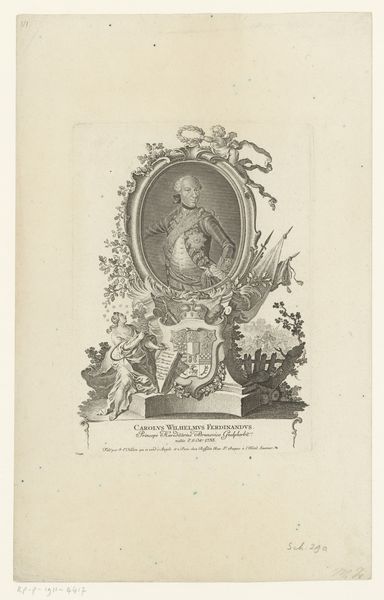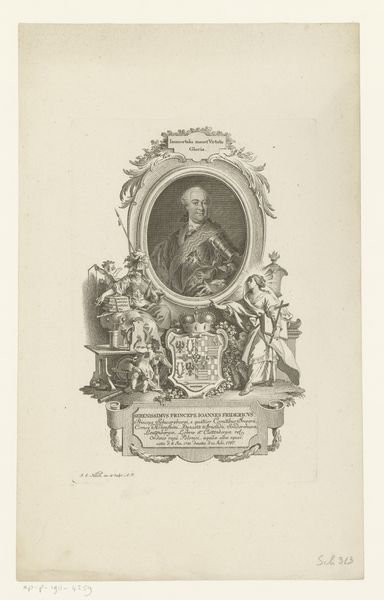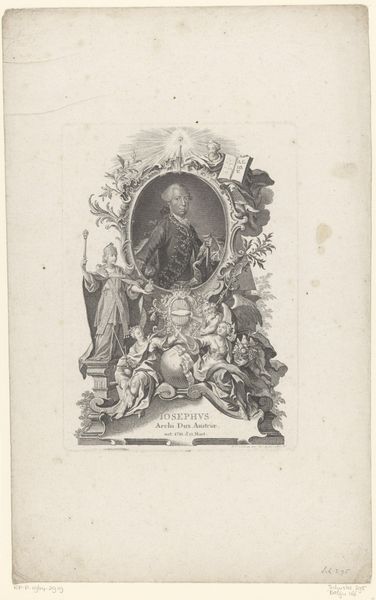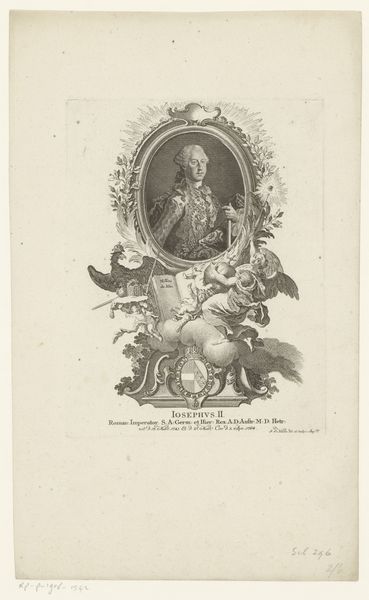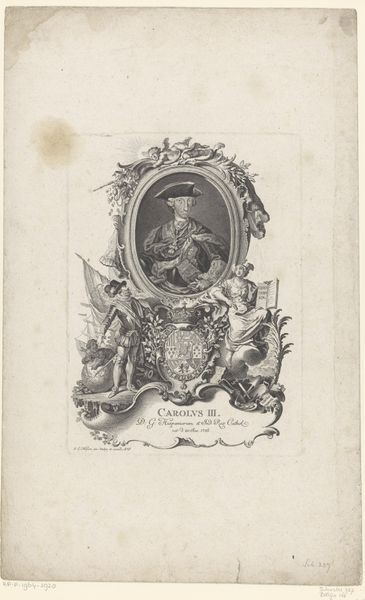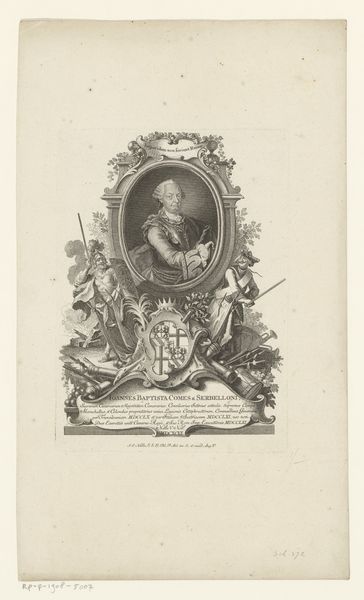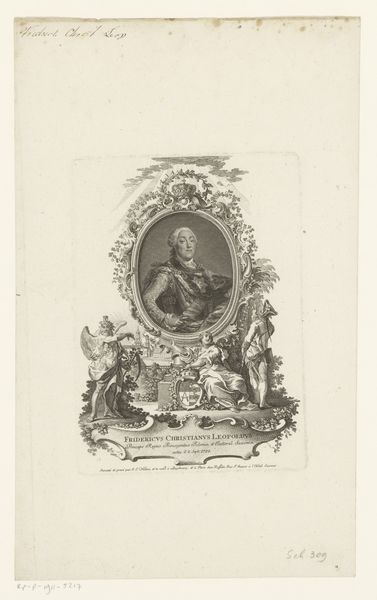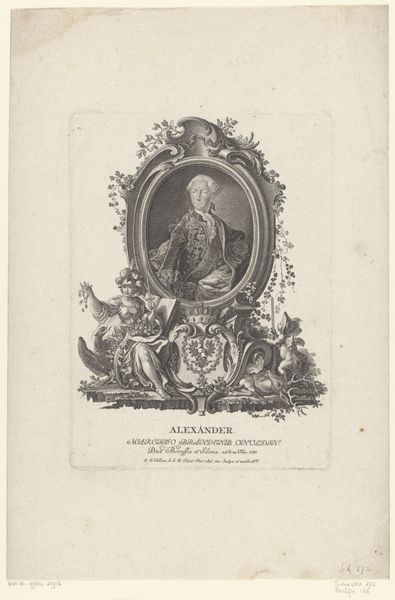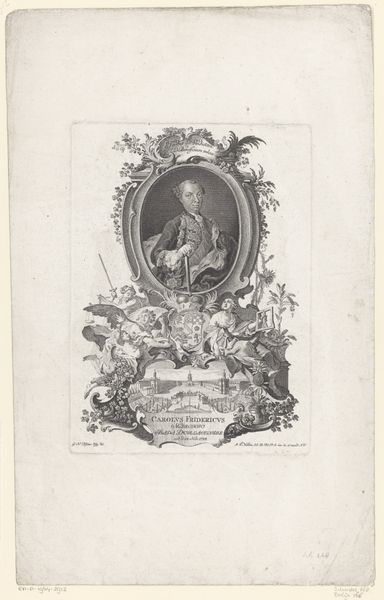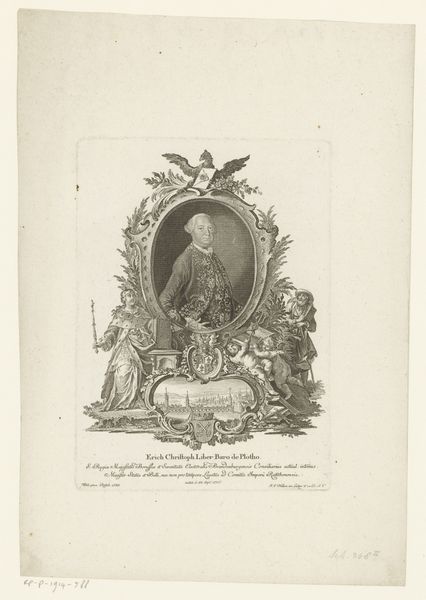
Dimensions: height 220 mm, width 160 mm
Copyright: Rijks Museum: Open Domain
Editor: This is "Portret van Clemens XIV" by Johann Esaias Nilson, an engraving from sometime between 1769 and 1788. The composition feels very formal, but the cherubs give it a playful touch. What do you see in this portrait? Curator: It’s interesting you say playful. Consider those cherubs – aren't they interesting symbols? They are of course messengers of God in baroque iconography, indicating divine favor and sanction surrounding Pope Clement XIV. What stories are told through the placement of symbols? Notice how this contrasts with the stern expression and calculated hand gesture. How does that create tension? Editor: The hand gesture does feel a bit… guarded? Curator: Exactly! The visual language suggests power but also a certain… defensiveness. Look at the papal coat of arms – the keys to Heaven, yes, but also a visual assertion of authority. How are we to interpret them now? It is a strategic blend of reverence and rulership meant to affirm his legitimacy, but the baroque style hints at a theatre of power that might not reflect internal realities. What feelings come up when you view this tension? Editor: I guess it makes me question the sincerity of the portrait. Like, is it really him, or is it just a performance of what a Pope should be? Curator: Precisely. Baroque art is so persuasive, so enveloping. Always consider not just what it presents but why. This portrait acts as cultural memory. A memory that must remain in question, like all memories. Editor: That’s fascinating. I never considered how the cherubs and the formal elements could be so at odds with each other. It’s like the whole image is having an argument with itself. Curator: Indeed, it's a dialogue between piety and power, innocence and experience—frozen in ink for us to decode. A powerful artifact, indeed.
Comments
No comments
Be the first to comment and join the conversation on the ultimate creative platform.
